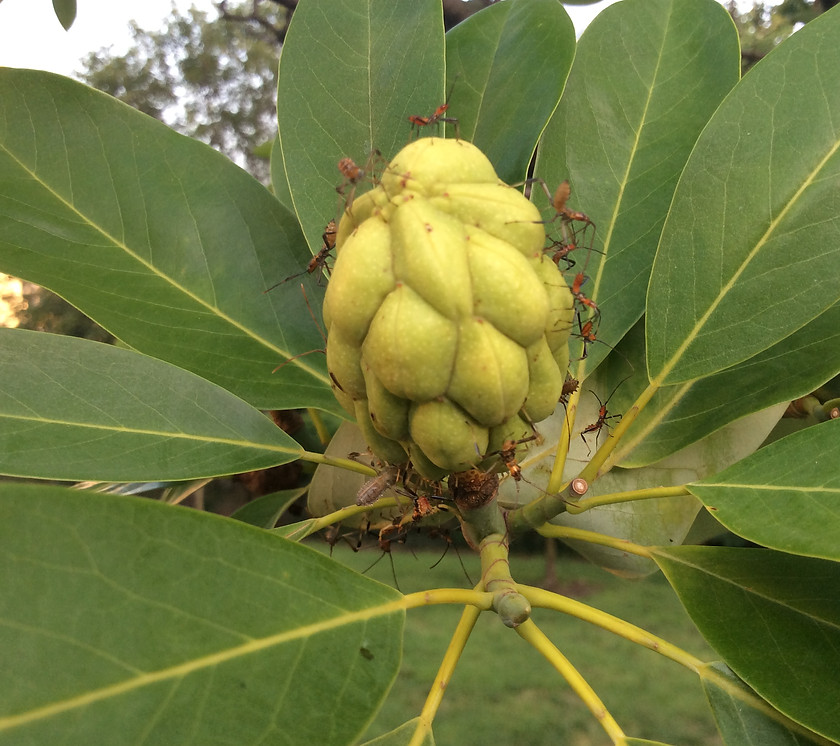top of page
There are two magnolias in the Park, a pink white magnolia in the northwest triangle and a sweetbay magnolia in the southeast triangle. See Wikipedia entry for the sweetbay here.
The sweetbay magnolia is also called simply sweetbay. It was the first magnolia to be scientifically described, and is the type species of the genus Magnolia. Since Magnolia is also the type genus of all flowering plants, this species can be seen to be the type species of all flowering plants.

The sweetbay magnolia in front of the black pine in the southeast triangle in June, looking west
Sweetbay magnolia factoids (see also here):
-
Sometimes evergreen in Philadelphia (Zone 7: see below) but can be deciduous further north. Ours is deciduous.

June 8, first flower on the sweetbay magnolia.
The sweetbay flowers almost two months after the pink white magnolia in the northwest triangle, and the evanescent flowers are completely gone in a few days.

Unripe fruit on the sweetbay magnolia in July being enjoyed by a swarm of insects
These fruits will ripen to red, as seen below, and will be quickly eaten by animals.


Philadelphia is in Zone 7.
Sixteen years ago Philadelphia was in Zone 6; with global warming southern tree species are finding favorable habitat in more northern latitudes.
Botany 101 Bonus
There are other food sources in July besides the sweetbay magnolia being enjoyed by insects. The photo below was taken in late July and show a "baker's dozen" for the animals and insects.
There are several mechanisms of seed dispersal. The wind can carry the seeds, as with the samaras of maple trees. The fruit containing the seed can be eaten and later deposited at a distance from the tree in an animal's feces, for example with apples or plums. The fruit can be cached by an animal for winter storage, and then forgotten, as with acorns. The seeds can stick to passing animals, although we have no examples of these in the Park because they tend to be a nuisance to humans.

Thirteen seed and fruit sources of food in late July.
The young black pine cones in the center are eaten while still on the tree. The seeds float to the ground from the older woodier cones and are eaten on the ground. Seeds are shown exposed in the redbud and golden rain tree pods. The "berries" toward the top of the yellow cypress are really cones.
bottom of page


